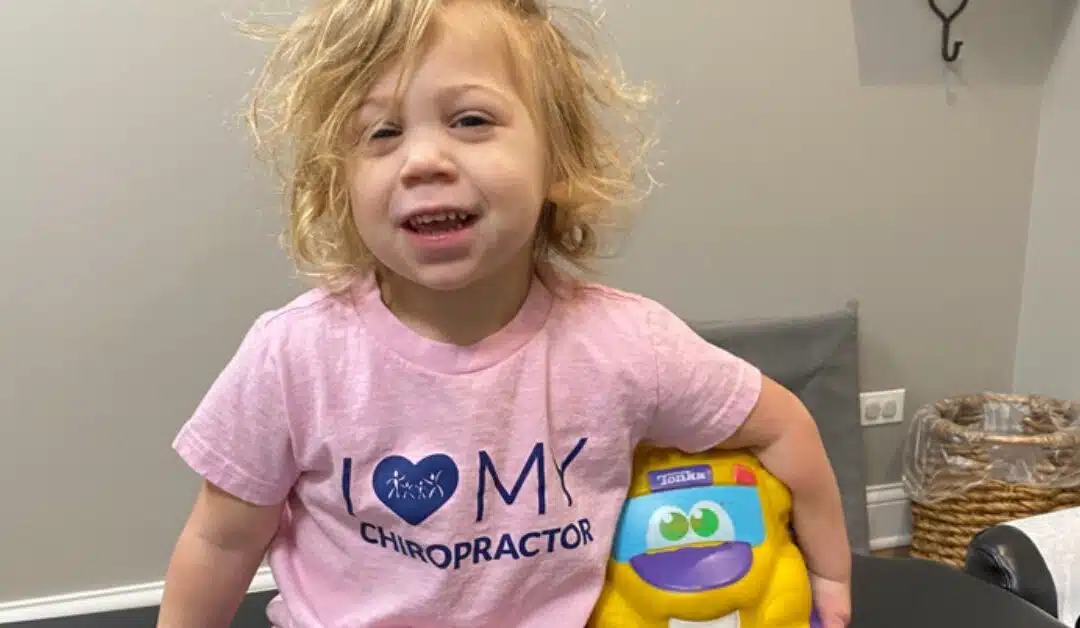For parents of children with autism, the daily struggles can often seem endless and intense. Sensory overloads, emotional meltdowns, language barriers, and behavior challenges leave families desperate for solutions.
Traditional medicine offers little beyond psychiatric labels and medications aimed at masking symptoms rather than delivering meaningful day-to-day improvements. Many parents rely on popular interventions like Applied Behavior Analysis (ABA) therapy, but does this truly address the root causes underlying their child’s challenges?
At PX Docs, we recognize autism as a whole-body, multi-system neurological condition, not just a localized psychiatric disorder. In the vast majority of cases, we find its origins lie in what we term “The Perfect Storm”—a cascade of cumulative stress and dysfunction gathering force during key developmental windows, resulting in an array of sensory processing and nervous system dysregulation issues.
So, what is ABA therapy? In this article, we’ll uncover what ABA therapy is, what an ABA therapist does, the model’s limitations, and, most importantly, why care for sensory issues must start from the inside out. We’ll also contrast the conventional ABA paradigm with our unique PX Docs approach, which focuses on the neurofunctional roots of autism first.
The Rising Prevalence of Autism
Over the past four decades, autism rates have exponentially increased, with around 1 in 36 children receiving an autism diagnosis each year. Genetics alone and the “we’re just better recognizing it and diagnosing it more” theories fail to explain this meteoric rise, and researchers now confirm that a wide range of environmental influences and an intersection of physiological stressors converge to disrupt neurological development. We call this intersection of stressors “The Perfect Storm.”
Key elements of The Perfect Storm span from preconception through early childhood. Maternal stress hormones during pregnancy impact the baby, and high-intervention birth models involving anesthesia, forceps, vacuum extraction, induction, and C-sections can injure delicate neural tissues in the brainstem region.
Harsh medications and aggressive antibiotics can also assault the microbiome and significantly disrupt the gut-brain connection and development. Emotional and social skills training will lack a robust foundation without first addressing this core cumulative burden.
What is Applied Behavior Analysis?
Applied Behavior Analysis is a therapy that uses positive and negative reinforcement to shape behaviors viewed as socially appropriate while extinguishing those deemed problematic.
ABA therapists apply consistent reward systems to encourage desired behaviors in communication, compliance, self-care, and more while discouraging repetitive actions, emotional meltdowns, or self-injury. Techniques range from discrete trial drills to natural reinforcement strategies embedding goals into play.
While ABA may teach rote skills, it fails to resolve core neurological issues underlying behavioral challenges. Think of ABA as more of an “outside-in” approach. In contrast, Neurologically-Focused Chiropractic Care seeks to address the root causes and take an “inside-out” approach to improve neurological function and thus the quality of life day to day.
What is ABA Therapy, and How Does It Work With Autism Spectrum Disorder?
Applied Behavior Analysis has emerged as perhaps the most prominent therapy for those on the autism spectrum. It draws from behavioral psychology principles to systematically shape and modify external actions classified as either socially appropriate or inappropriate.
The objectives of ABA focus outwardly on adapting a child’s behaviors to better conform to social norms, improve the appearance of typical functioning, and minimize visibly unusual mannerisms. Programs apply consistent reward delivery (and denial of them) to increase desired behaviors like speech sounds or eye contact and decrease disfavored ones like hand flapping or echolalia.
An ABA therapist, or Board-Certified Behavior Analyst (BCBA) employs techniques ranging from discrete trial training drills to natural environment reinforcement during play. While behaviorist theories hold merit, demands for compliance and conditioning often overlook individual differences in sensory needs, communication capacities, neurodiverse motivations, and self-regulatory abilities.
Most critically, this external conditioning fails to resolve the biological roots beneath the dysregulated or dysfunctional behaviors. To develop new sustainable skills, they must first align with a child’s natural nervous system capacity, rather than challenge or overlook it.
The Goals and Effectiveness of ABA Therapy
The main focus of ABA therapy is to help individuals learn new skills and reduce disruptive behaviors.
- Increasing language and social skills like speech production, eye contact, shared focus, turn-taking, and reciprocity
- Enhancing learning, focus, compliance, and achievement measured on standardized metrics
- Suppressing repetitive mannerisms, restricted interests, emotional dysregulation, tantrums, and self-injury
- Expanding self-care, play, school readiness, and normalized peer interactions
Proponents tout ABA as scientifically validated through decades of data, and techniques can, indeed, support the development of outward social and communication capacities in children with autism. However, close inspection reveals lingering issues around core effectiveness, withdrawn compliance, and a lack of lasting application.
While some studies emphasize surface behavior metrics, they fail to capture deeper neurological markers of regulation and integration necessary to sustain skills. Superficial conformity often masks, rather than resolves, persistent struggles to process, adapt, and connect. Additionally, demands for standardization remain at odds with the beauty of neurodiversity.
While behaviorist methods have some utility when aligned with development, Applied Behavior Analysis therapists often put the cart before the horse. Without stable nervous system integration and function, externally conditioned actions rarely get to the root of the problem. For meaningful progress, we must first address nervous system dysregulation foundationally.
Criticisms and Controversies Surrounding ABA
Although many people advocate for the effectiveness of Applied Behavior Analysis, there are genuine concerns regarding its methods and overall approach:
- Techniques risk being experienced as punitive, triggering overwhelm. Pressure for compliance deprives vulnerable children of a voice around bodily autonomy and consent.
- Strict behaviorism favors conditioning “normalcy” but can extinguish natural diversity in self-soothing, play, and interaction styles.
- High demands for eye contact, emotional performance, and social conformity intensify distress surrounding core skill deficits.
- Failure to generalize rote learned behaviors reflects the absence of innate integration, not willful noncompliance due to behavioral stubbornness alone.
- Families report withdrawal and despair rather than empowerment. Children mimic external compliance masking inner turmoil.
- Specialists drilling specific behaviors often lack deeper child development knowledge to recognize sensory processing, connective, and self-regulatory disorders underlying distress.
- Coding ABA solely as educational rather than medical evades clinical oversight concerning side effects. Ethics require greater vigilance.
- Paradigm emphasis on behaviors alone risks blinding providers to medical dimensions like trauma history, immune dysregulation, inflammation, metabolic dysfunction, toxicity, subluxation, and disrupted vagal signaling integral to diagnosis and care.
Therefore, rather than solely relying on research or professional opinions and recommendations, we strongly encourage parents to listen to their own innate gut instincts about what is best for their sensory and spectrum child. Often, that may mean balancing all the various forms of therapy and backing off on some to make more “room” for others.
The Role of Nervous System Dysregulation in Autism
While the behavioral challenges of autism pose outwardly, its origins stem from dysfunction and dysregulation deep within the central and autonomic (involuntary) nervous systems. Dysfunction disrupts foundational sensory integration, motor sequencing, and higher capacities like social skills and emotional regulation.
Key mechanisms at play include chronic sympathetic nervous system dominance, parasympathetic and vagal pathway deficiencies, brain connectivity distortions, functional imbalances between limbic emotional centers and prefrontal cortical regulation regions, immune-inflammatory activation, metabolic irregularities, and sensory processing disorders—all powerful biological forces operating beneath the behavior.
Because autism emerges neurologically rather than psychologically, a neurodevelopmental approach becomes essential. Aligning behavioral goals to disrupted nervous system function, for example, allows rhythmic nurturing of natural self-regulation. Progress unfolds organically rather than through aggressive drilling alone.
Restoring Nervous System Function
At PX Docs, we specialize in targeted, physiologically-based methods assessing and strengthening dysregulated nervous system function underlying the overwhelming challenges of autism gently, objectively, and effectively without medication.
Core tools we use include:
- Case History Deep Dive: A personalized, deep dive into each child’s unique “Perfect Storm” case history can yield so many clues to finding and addressing the root cause (s) of autism.
- Advanced Autonomic Assessments: We deploy Heart Rate Variability and other metrics to measure stress patterns, vagal integrity, and self-regulatory capacity.
- INSiGHT Scans: Specialized INSiGHT Scans reveal dysfunctional patterns related to subluxation (spinal cord tension), inflammation, sensory disconnection, and disruptive compensation.
- Custom Care Plans: Once we have completed the deep-dive case history and the findings from the Neurological INSiGHT Scans, we can build a fully customized and personalized care plan to address your child’s nervous system imbalances and dysregulation.
The results of these methods are profound yet non-invasive. Parents report improved sleep, cognition, expressive voice activation, eye contact emergence, stamina, emotional regulation, and accelerated developmental gains from this neurologically-focused “inside out” approach.
Exploring a New Integrative and Neurologically-Focused Pathway
At PX Docs, our specialty lies in identifying and relieving sources of nervous system stress and dysfunction objectively. If your child has plateaued with ABA therapy or you suspect neurological factors at play, we encourage you to use our PX Docs Directory to explore more integrated options with a qualified PX Doc near you.
Families can restore developmental momentum through this nervous system-focused approach and help children with autism thrive.





